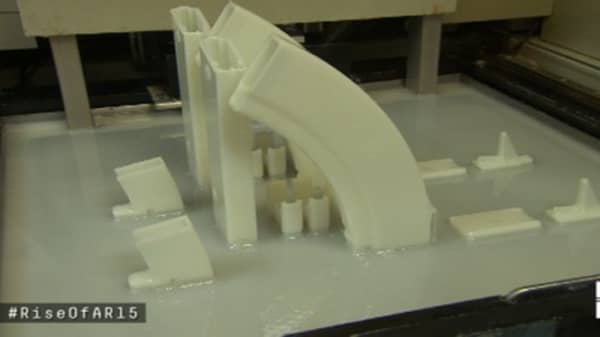A law student at the University of Texas and a self-proclaimed anarchist, Wilson is spearheading a method of firearms manufacture that's digital and potentially dangerous. It allows anyone—regardless of age or background—to build an untraceable gun by downloading computerized gun designs and printing out parts on a 3-D printer.
He's focusing his efforts on the AR-15, a popular semi-automatic, military-style rifle that was used in the recent mass shootings in Newtown, Conn., and Aurora, Colo.
"We know so much that this government doesn't want right now the AR-15 in people's hands," Wilson said. "It hates the idea, at least in theory, of gun violence. It's doing everything it can to at least simulate the idea that it has it under control. We like to demonstrate that no, not only does it not have it under control, it's losing control every day."
Three-dimensional printing isn't brand new, but Wilson is among a handful of pioneers applying the technology to gun-making. Starting with computer-aided design (CAD) files downloaded from Wilson's "Defense Distributed" website, would-be AR-15 owners with access to 3-D printers can produce the core of the gun known as the "lower receiver"—in a traditional manufacturing process, the only part of the gun that is engraved with a serial number.
The rest of the AR-15 parts are widely available in gun stores and online. Wilson has also made available CAD files for high-capacity magazines, which are restricted in some states.
Under federal law, printing a gun for personal use is legal, but Charles Hauser, chief of the Bureau of Alcohol, Tobacco, Firearms and Explosives's gun tracing center, said the agency is just beginning to struggle with the issue of 3-D-printed guns.
"It's a serious, serious problem," Hauser said. "Now, instead of having to have a factory to build a gun, I guess me and you can build it in our basement pretty easy. And we don't even have to be real good technical guys. It is a ghost gun."




